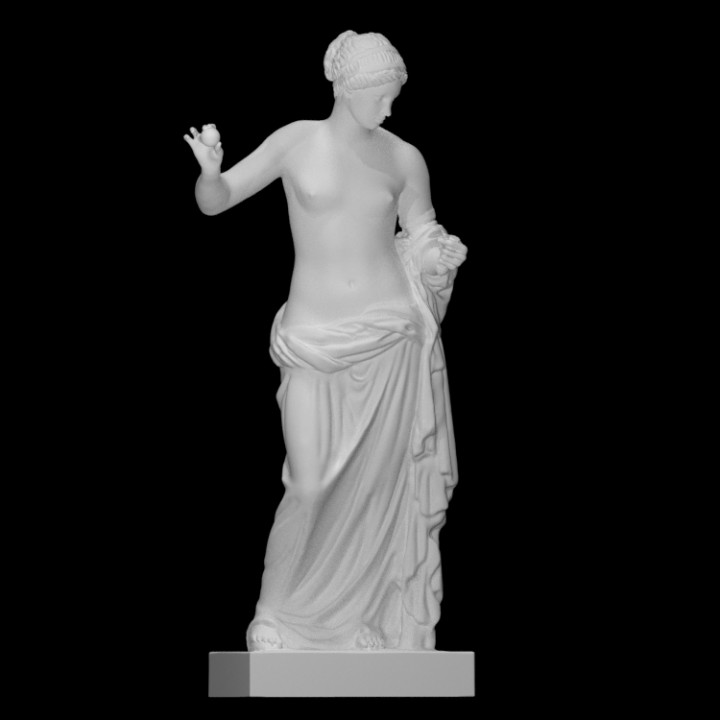
Venus of Arles at The Louvre, Paris
myminifactory
The Venus of Arles stands at 1.94 meters high, a masterpiece of sculpture residing in the Musée du Louvre. Crafted from Hymettus marble, this work dates back to the late 1st century BC. It is believed to be a replica of Praxiteles' Aphrodite of Thespiae, commissioned by the courtesan Phryne. Pausanias mentioned in the 2nd century AD that a group featuring Cupid, Phryne, and Aphrodite existed at Thespiae in Boeotia, central Greece. The Praxitelean style is evident in the head's resemblance to the Cnidian Aphrodite, a work known through copies. If we assume the original Aphrodite of Thespiae was created during Praxiteles' youth, around 360 BC, it would be an early work of his, given its partially draped female form, which became a recurring theme in the Hellenistic era, as seen in the Venus de Milo. The Venus of Arles was discovered in several pieces at the Roman theatre in Arles. The sculptural program at Arles was executed by Italian artists, possibly Greek artisans. As the divine ancestor of the gens Julia, Venus held significance for the Romans. Arles, having supported Caesar when Massilia backed Pompey, received numerous rewards. A semi-nude heroic statue of Augustus dominated the sculptural program of the Arles theatre. The Venus was unearthed in 1651 by workmen digging a well. The head appeared first, prompting further excavations. Later, after being given to Louis XIV in 1681 for decoration at Versailles' Galerie des Glaces, more excavations were conducted near the theatre's scenae frons, but no additional fragments were found. The statue was seized from the royal collection during the Revolution and has been housed at the Musée du Louvre since its inception. A replica is displayed in Arles' municipal building. François Girardon, a royal sculptor, restored the sculpture by adding attributes to make it more definitively Venus: an apple in her right hand, symbolizing her win in the Judgement of Paris, and a mirror in her left. The discovery in 1911 of a cast made before Girardon's restoration revealed the extent of his transformative changes, which included refinishing surfaces and slimming the figure. This transformation led to the sculpture being placed in storage at the Louvre. The head belongs with the body, an important point since it is the only sculpture of this model retaining its head, and the head is Praxitelean, comparable to his Aphrodite of Cnidus. The bracelet on her left arm, however, is original, a trait identifying the goddess as seen on the Cnidian Aphrodite. This object is part of "Scan The World," a non-profit initiative introduced by MyMiniFactory, which aims to create a digital archive of fully 3D printable sculptures, artworks, and landmarks from across the globe for public access free of charge.
With this file you will be able to print Venus of Arles at The Louvre, Paris with your 3D printer. Click on the button and save the file on your computer to work, edit or customize your design. You can also find more 3D designs for printers on Venus of Arles at The Louvre, Paris.
